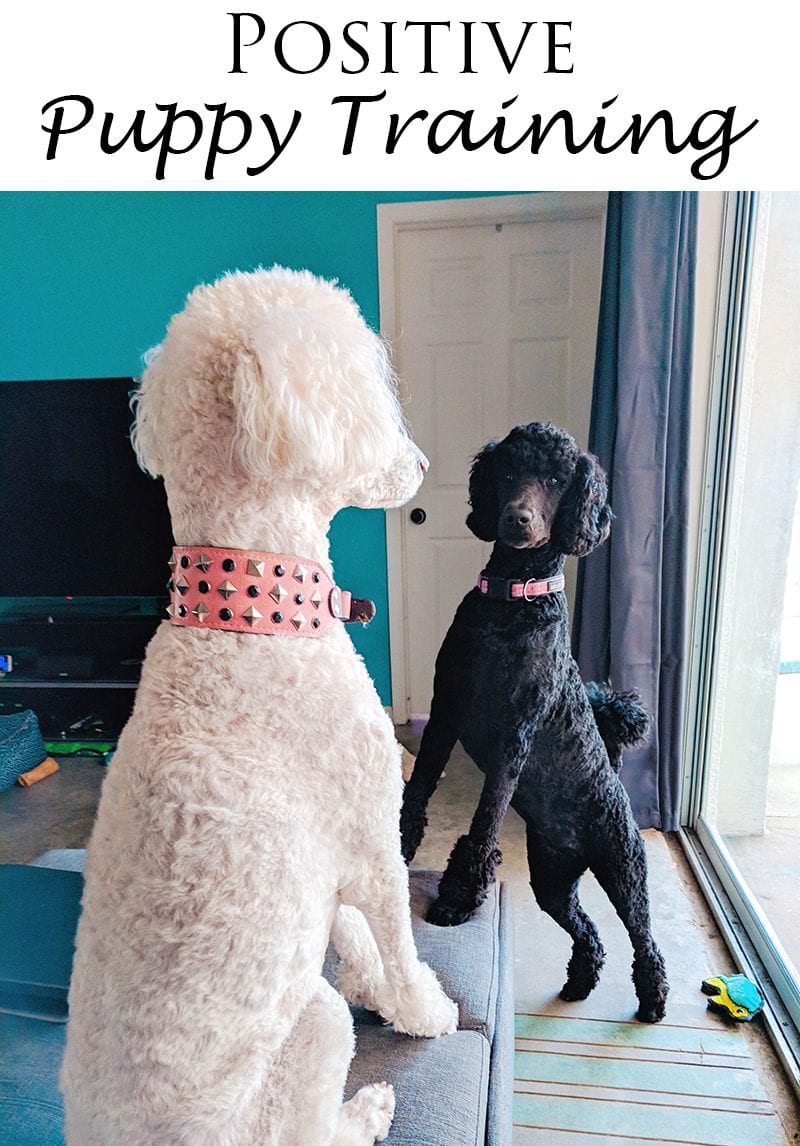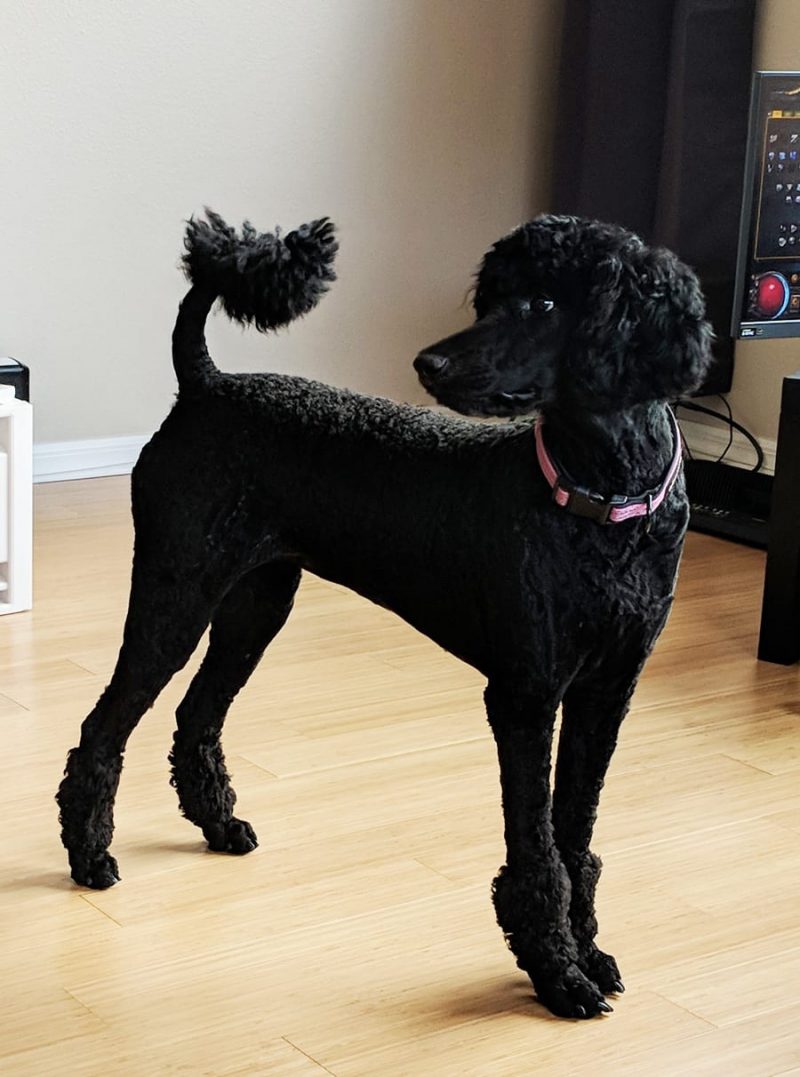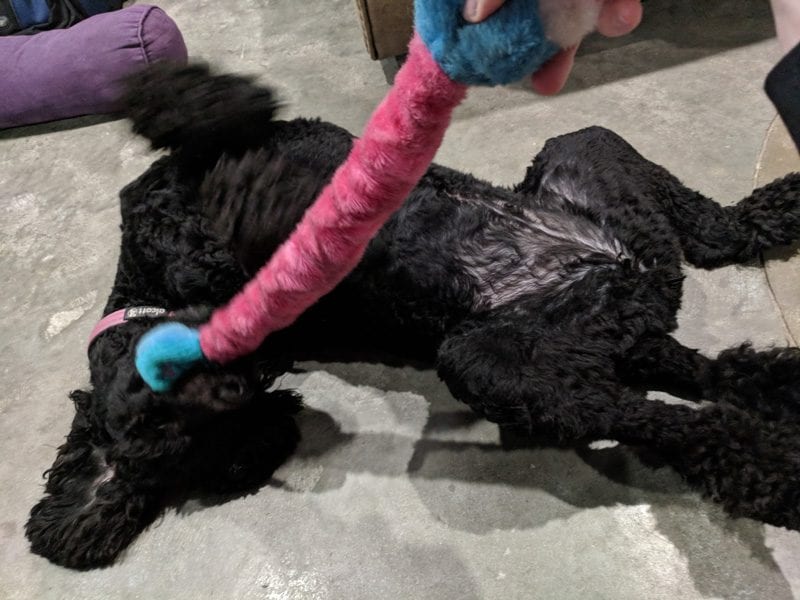Positive Puppy Training Basics

Positive Puppy Training Basics
So, you have a new puppy? Hopefully, you’ve considered enrolling her in a local puppy training class so that you can learn the positive puppy training basics of how to train your puppy as well as give her the socialization with other young canines that is crucial for her social development in the long term. Today I’m going to cover a few training basics to be sure to include in your puppy training plan to make sure your puppy turns out to be a happy, confident, and balanced dog.
Clicker Training

Make sure that the training program you are enrolling in uses positive puppy training methods, not punishment-based methods. If the instructor promotes things like choke collars, poking your puppy in the side, or says you need to dominate your dog, run – don’t walk – to the nearest exit with your precious puppy in tow.
A great way to make sure you are getting involved with a trainer that uses positive methods is to find a clicker training class. Clicker training is very easy to learn, uses very inexpensive gear, and is an extremely powerful training method used by almost all trainers and handlers in competitive dog sports across the world, which is why it’s one of the best positive puppy training basics!
Clicker training allows you to mark the exact behavior you want to reward which allows you to teach your dog what right thing to do is in each situation without using harsh punishments that can lead to fear and aggression later in life.
Originally, I did clicker training with Phaedra. However, I later exchanged the clicker for using the word Yes! to mark the behavior that I want to capture. With Nyx, I’ve skipped the clicker and just gone straight to using the word Yes!
Crate Training and Potty Training
Most professional dog trainers will recommend crate training your puppy as soon as you bring them home. Crate training offers benefits for the life of your dog. It gives you the freedom to leave them alone unsupervised knowing that they are safe from getting into trouble, destroying furniture or hurting themselves.
It is also the preferred method for potty training. It works like this:
- Get your puppy out of the crate and take them immediately outside to go potty, reward with excited praise and affection – a regular puppy party!
- Play inside for ½ hour to an hour, depending on your puppy’s age and stamina. Feed some of their food, then immediately back outside for another potty and puppy party.
- Return your puppy to the crate for a nap, then repeat.
This method basically ensures that your puppy never even has a chance to practice peeing or pooping in the house. Instead, they get lots and lots of praise for going outside. Eventually, if they do have an accident in the house, you can just use a disappointed or slightly correctional tone, scoop them up and immediately take them outside, and reward for outside potty.
Exercise and Games

In addition to training, puppies need plenty of exercise, particularly from about 3 months to 2 years. During this period, if your puppy is not getting enough mental AND physical stimulation, they are likely to become a menace in the house.
Often, a short walk around the block is just not sufficient to burn off the energy of a young dog. Instead, find ways to encourage more vigorous play for more intense exercise designed to wear them out. Trust me, if your dog is high energy like Nyx, you will need a lot of ways to burn off energy.
If you do not have a fenced-in yard, you can use a long-line (just a leash or a rope 25-50’ in length) to work in a large field. You don’t have to hold the long-line, just make sure you stay close enough to it that you can regain control of your puppy in an instant to keep them safe.
Here are two fun games that every young dog should learn for a lifetime of “go to” games to wear them out, making them perfect additions to this list of positive puppy training basics.
Fetch
Every dog should learn fetch. It is so easy to train (especially if you are doing clicker training) and it becomes a self-rewarding game. If you happen to have a herding, working or sporting group breed, expect fetch to be a lifetime obsession. Nyx absolutely loves to play fetch, while Phaedra will do it a few times and then she’s done.
If you are lucky enough to have a large fenced area, you can even tucker your dog out with an automatic ball launcher for hours of fun without wearing your arm out! I need to give this a try!
Monkey in the Middle
This is a fun game that serves a few purposes: Teaching your dog “recall” (to come when called) as well as providing exercise whether indoors on a rainy day or while outside in a secure area.
You can play this game with several people or just two. Starting indoors, alternate calling your puppy and then being silly or luring her with a treat until she comes over. Then touch her collar, giver her the treat and lots of praise.
The reason for the collar touch? Well, in an emergency situation, you want your dog to be used to you reaching for her collar so you can get a leash on her to keep her safe from danger.
You can gradually add some distance to this game until your puppy is ready to run several yards between people outside on a sunny day.
Positive Puppy Love

The best tip from positive puppy training basics to consider when training your puppy is to realize that you are the giver of all the things your puppy loves. Identify their favorite things and use access to them as a means to reward your pup for the behaviors you most want to see. In this way, you will find that you rarely, if ever, need to use harsh punishment with your young dog.
Nyx’s current obsessions are the West Paw Zogoflex Tux with Kong Peanut Butter inside it, frozen. She will do puppy push-ups for her peanut butter tux toy!
If you’re unfamiliar with puppy push-ups, let me share them with you! After your puppy knows both sit and down (as in lay down), you can work on this exercise. You ask your dog to sit, then lay down, then sit, in succession. This helps to build up your puppy’s core, as well as gives them a good workout.
What are some positive puppy training basics that you teach your dogs?

Awwwww, they are so adorable! And I’ve found that having an older, more experienced buddy helps a younger dog “learn the ropes”. They actually teach each other about how you behave and what not to do!